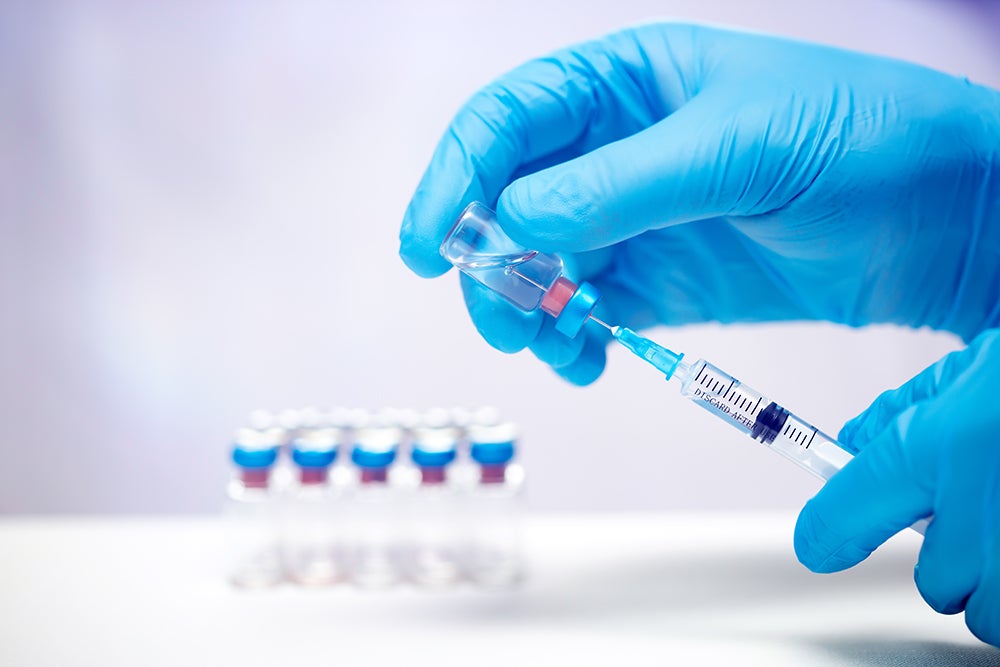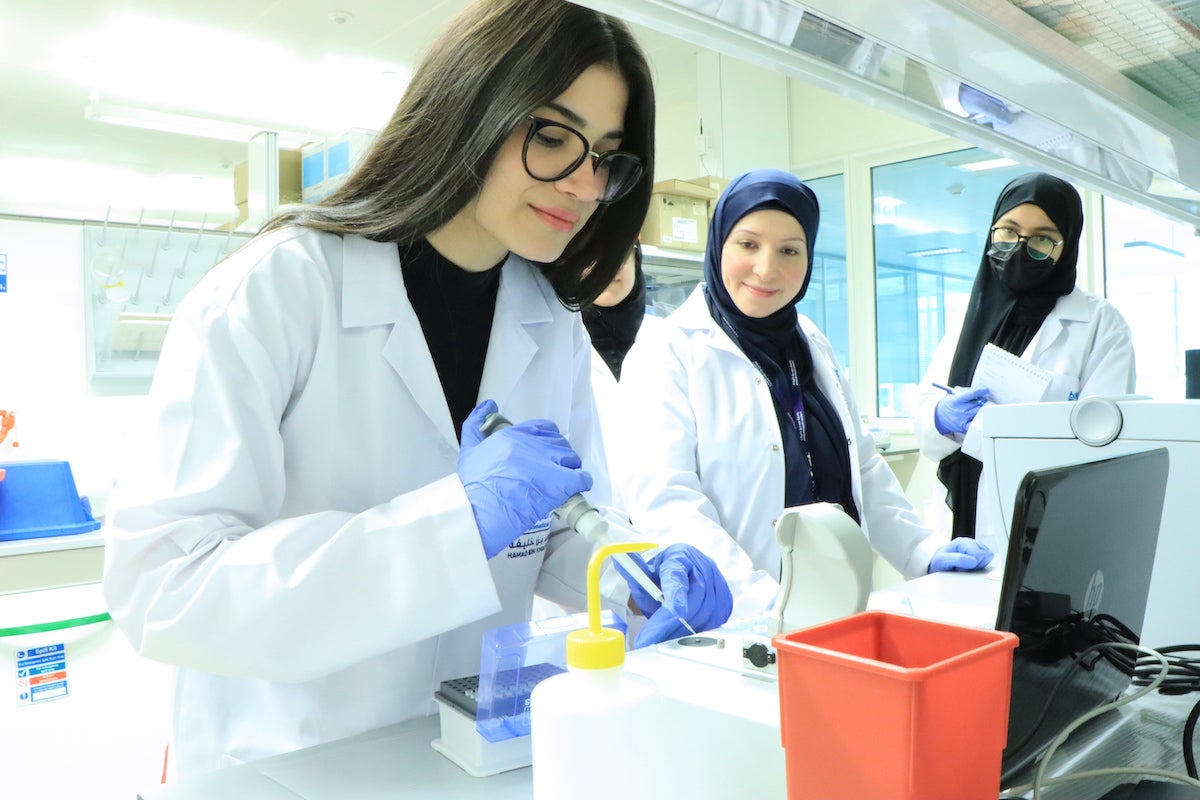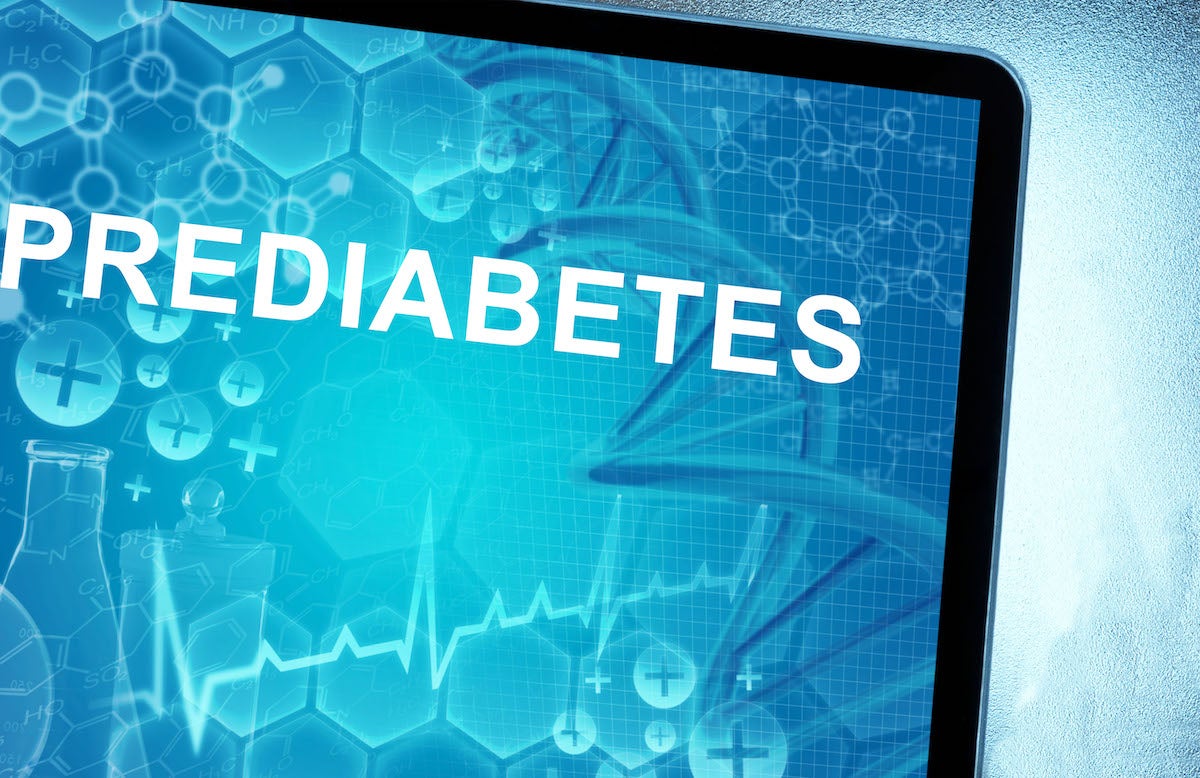
Since the start of the COVID-19 pandemic a year ago, there has been hope as well as skepticism about the rapid development of a vaccine against the SARS-CoV-2 virus, the strain of coronavirus that causes COVID-19 which has infected over 70 million people worldwide and caused 1.6 million deaths to date. The unprecedented efforts put into this cause are finally showing very positive signs, allowing us to end 2020 on a hopeful note. In this edition, QBRI experts discuss observations and implications of recent vaccine trials.
The BioNtech and Moderna mRNA Vaccine
Normally, for a vaccine to be approved by the US Food and Drug Administration (FDA) for Emergency Use Authorization (EUA), it should exceed the 50% efficacy cut-off. The latest interim results from phase 3 clinical trials revealed two vaccine candidates with more than 90% effectiveness: one from Pfizer and BioNtech (BNT162b2) and another from Moderna (mRNA-1273) (1)(2).
Both vaccines are messenger RNA (mRNA)-based vaccines. Ribonucleic acid (RNA) vaccines rely on the concept of using gene-based therapeutics to engineer the required proteins in order to stimulate the immune system to fight pathogens and diseases. This vaccine type has been in the research phase for decades but had not previously been authorized for use in humans (1, 2). However, due to the immense resources that have been poured into developing SARS-CoV-2 vaccines, these two contenders were able to reach the point of development to allow their use in clinical trials.
The benefits of mRNA vaccines are the speed in design and production, low manufacturing cost, and their ability to induce both cellular and humoral immunity (5)(6). Moreover, mRNA is incapable of integrating into our genome, hence has no oncogenic (a gene that has the potential to cause cancer) risk. mRNA vaccines can be delivered quickly into the cell by crossing only the outer cellular layer known as the plasma membrane, and thereafter can immediately induce protein synthesis. Furthermore, mRNA-encoded protein availability is transient, due to the short half-life of mRNA, thus achieving a high safety profile for mRNA-based vaccines (7).
Both Pfizer/BioNTech and Moderna vaccines use the mRNA encoding genetic variants of the SARS-CoV-2 spike protein, which is wrapped in lipid nanoparticles to prevent it from being degraded by circulating enzymes in the human body (8)(9).
Once the mRNA is delivered into our cells, it is translated into proteins using standard cellular machinery (10). The resulting proteins are then presented on the surface of our cells and recognized by the immune system as “foreign”, thus inducing an immune response by calling on immune cells to develop antibodies to neutralize subsequent viral infections. Eventually, the viral mRNA in the human cells is destroyed, leaving no permanent trace (5)(9).
The 95% efficacy shown in the Pfizer/BioNtech phase 3 clinical trial was recently published. The randomized double-blind study of their mRNA vaccine, meaning that patients were randomly segregated into placebo and treatment groups while both medical staff and patients were unaware of which treatment was being given, was conducted on 43,548 participants aged 16 and above. Participants received either a placebo or the vaccine (1:1 ratio) intramuscularly in two doses, 21 days apart, and were followed for a median of two months.
Individuals with obesity and coexisting conditions were included and more than 40% of participants were older than 55. Based on their report, vaccine recipients showed mild to moderate transient side effects, such as pain, erythema (redness of the skin), and swelling at the site of injection, and systemic reactions like fever, headache, and myalgias (aches and pains) (11). Additionally, only eight COVID-19 cases were seen in the vaccine group, as compared with 162 in the placebo group (12).
The vaccine demonstrated early protection at 12 days after the first dose (11). On December 11, 2020, Pfizer announced their vaccine was authorized by the FDA for emergency use and it is now hoping to deliver 1.3 billion doses for vaccination by the end of 2021(13). However, once the vaccine is freely available, it will be a challenge for the clinical investigators to maintain randomization to complete their safety documentation beyond the two months reported safety, as noted above.
The results of the Moderna phase 3 clinical trial are not yet published but are likewise based on a randomized double-blind protocol of 30,000 participants aged 18 and above, in collaboration with the National Health Institute, USA.
Their initial analysis is based on 95 confirmed COVID-19 cases, of which 90 cases occurred in the placebo group compared to only five cases in the mRNA-1273 group. Moreover, severe COVID-19 cases occurred only in the placebo group, leading to an estimated 94.5% vaccine efficacy (14).
No significant safety concerns were reported, showing that the vaccine is well tolerated. A robust immune response, involving both cellular and antibody immune response, was detected just a few days after the second vaccination dose. Moderna is aiming to deliver approximately 500 million to 1 billion doses per year upon completion of its phase 3 trial (14).
Although both vaccines are mRNA based, there are differences as regards logistics, transportation, and administration between them. BNT162b2 must be stored and shipped at -70°C in specially designed containers with dry ice, supported with thermal sensors and GPS trackers to ensure that the vaccine immunogenicity remains effective.
Once thawed, it can be stored at 2-8°C for five days (15). For immunization purposes, the Pfizer/BioNTech vaccine requires two injections, given 21 days apart (16). However, the mRNA-1273 vaccine can be kept in a regular freezer (-20°C) for up to six months and, once thawed, should be stored in a standard refrigerator (4°C) for up to 30 days. The Moderna vaccine is administered in two injections, given 28 days apart (17).
In summary, both vaccines were tested on thousands of participants with diverse ethnicity, gender, age, and demographics, and the short-term side effects of vaccination appear to be consistent with those normally manifested for other adult vaccinations, such as the seasonal influenza vaccination (1)(2). With these encouraging results and the rapid advances made in the COVID-19 vaccine development, we are optimistic that both vaccines will help in reducing the disease burden, transmission, duration, and severity. However, there still remain unanswered questions, such as the duration of the protective immunity, presence of long-term side effects, how critical is the multi-dosing requirement, and the efficacy in pregnant women and children below 16 years of age.
Section Contributors:
Neyla Al Akl (Senior Research Associate, QBRI)
Arabic text validation: Rowaida Z. Taha (Research Associate, QBRI)
Editors: Dr. Adviti Naik (Postdoctoral Researcher, QBRI), Dr. Alexandra E. Butler (Principal Investigator, QBRI)
For references, please click here.
Related News










